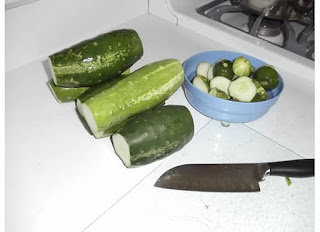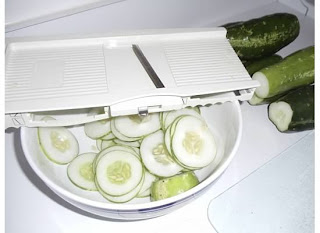While I would be the first to admit that growing watermelons vertically isn't the best method, for many of us, when you lack space, you have to do what is best to get the results you are looking for.
There is nothing wrong with growing watermelons vertically, you will just need to do a couple of extra steps to ensure that the watermelon has something to grow up and of course can be propped up.
Let's start with what you can use as a vertical support system. If you have grown cucumbers, beans, or peas then you already have the experience needed for vertical watermelons. You will simply use a trellis.
A trellis made from some wood or netting will work, but keep in mind the watermelon vines and the watermelon itself will get fairly heavy, so try to use something that can easily withstand their weight. As you can see in the photo above I am using a lattice trellis made from pine wood and then stained with a water based outdoor stain. This gives me the strength I need to support the vines, and of course the watermelon.
Be sure to join Mike`s vegetable seeds mailing list
This brings me to the support portion. How do you support such a heavy fruit? Well, there are a number of ways that I have seen it done, but the one that works best for me is a simple shelf.
I took two pieces of old pine wood that I had in my garage and made an "L" shaped shelf. One part of the shelf will attach to the trellis itself, I will get to more on that in a moment, and the other part will support the watermelon.
I took this step to the extreme and attached the two pieces of wood to make the shelving unit, using dove tail joinery. If you have been following my blog you also know by now that I love woodworking as well. This type of joint is very strong, and gets just some glue to keep the two pieces of wood together.
You can use outdoor deck screws to attach the pieces as well, as that will hold also. I try not to use nails as they are not as strong as screws or the dovetail joints....at least in my opinion.
I attached the shelving unit to the trellis using nothing more than two deck screws, long enough to go through the shelf and of course the trellis. Try not to go all the way through the trellis as you will have the pointed end of the screw sticking out which could scrape you later.
And that's it! You can stain the shelf itself if you would like it to withstand the weather for a few seasons. Pine does not wear well in the outdoors. I did not preserve this particular shelf, but might sand it down and give it a couple coats of water based stain in the gardening off season. We'll see. I included another photo below of larger watermelons sitting on another shelf for support, attached to the same trellis.
About the Author
Mike Podlesny is the author of Vegetable Gardening for the Average Person: A Guide to Vegetable Gardening for the rest of us, the moderator for the largest vegetable gardening page on Facebook and creator of the monthly Seeds Club.
| Watch the video below to learn more about Mike`s Seeds of the Month Club: |


























